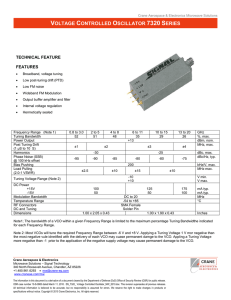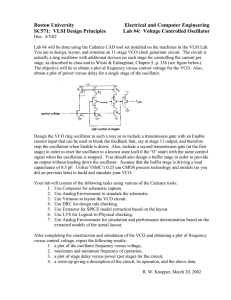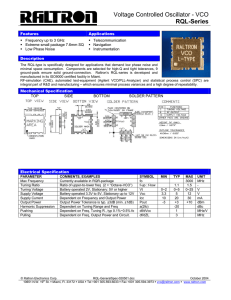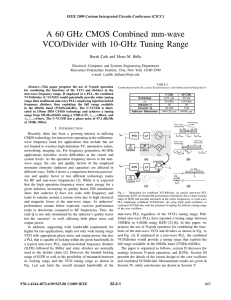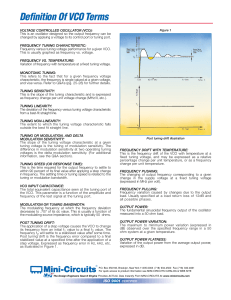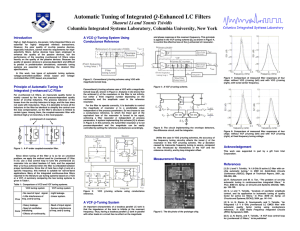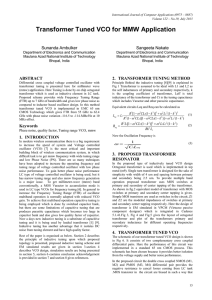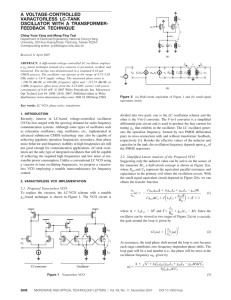Basic LC VCOs - Electrical Engineering
advertisement
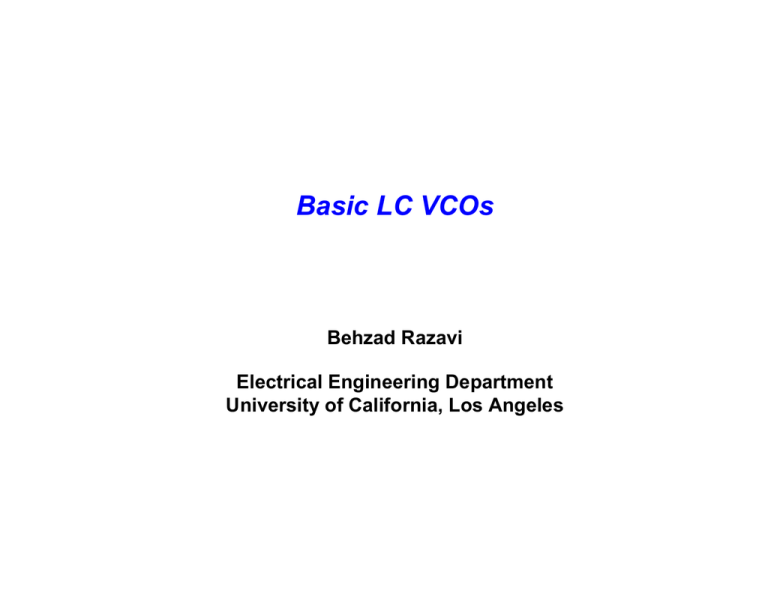
Basic LC VCOs Behzad Razavi Electrical Engineering Department University of California, Los Angeles Outline • • • • • Operation of Oscillators One-Port View Cross-Coupled Oscillator VCO Techniques Discrete Tuning 2 Voltage-Controlled Oscillators Center Frequency z Tuning Range: - Band of Interest - PVT Variations z z Gain (Sensitivity) z Supply Rejection Tuning Linearity z Intrinsic Jitter z Output Amplitude z 3 Feedback Oscillator 4 One-Port View • Example of negative resistance: 5 Use of Resonance in Oscillator Design 6 Cross-Coupled Oscillator • • Looks like a diff pair with positive feedback. Oscillation freq is given by: 7 Use of Symmetric Inductor • Requires accurate model of inductor. Æ can’t begin design without a useful inductor library. 8 Output Swing • Peak differential output voltage swing is given by: • How much is the output CM level? 9 Supply Sensitivity • Voltage-dependent CDB results in a finite Kvco from VDD to output frequency: 10 One-Port View 11 How Do We Vary the Frequeny? • Use a MOS varactor. 12 VCO Type I • • • To maximize tuning range, we wish to minimize C1. But C1 is given by: - Caps of M1 and M2 (including 4Cgd) - Cap of L1 - Input cap of next stage Tuning range may be limited. 13 VCO Type II • Select device dimensions to set the output CM level to about Vdd/2. 14 Varactor Modulation by IDD • • Noise of current mirror becomes the dominant source. Does this effect exist in Type I VCO? 15 VCO Type III • Tuning range: • With 5% bottom-plate parasitic cap: 16 VCO Type IV • • • Select device dimensions to set the output CM level to about Vdd/2. Output swing twice that of previous topologies. But tail noise modulates varactors. 17 Discrete Tuning • But on-resistance of switches lowers tank Q: 18 Use of “Floating” Switch 19
